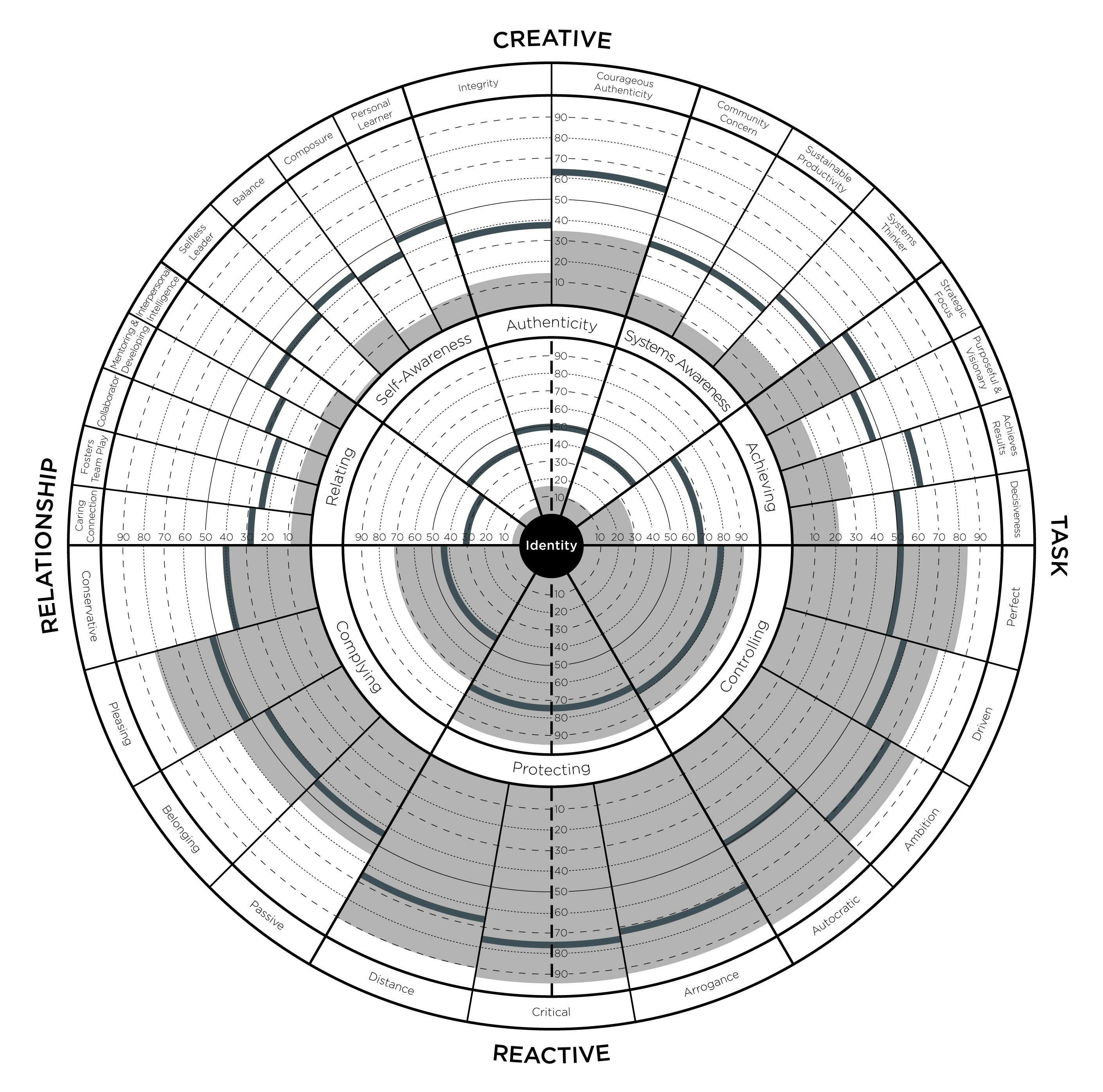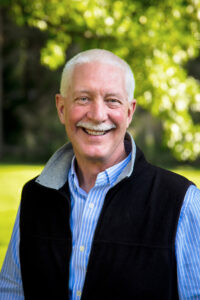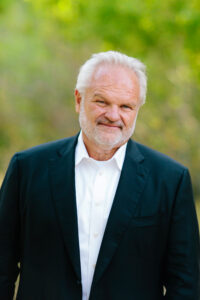Scaling Leadership
The world of business is moving faster than ever before, and this world is filled with much volatility, uncertainty, complexity, and ambiguity. In their book, Scaling Leadership: Building Organizational Capability and Capacity to Create Outcomes that Matter Most, leadership experts Bob Anderson and Bill Adams argue that in these fast-changing times, no single leader—no matter how skilled or how experienced—can know everything that needs to be known about their organization, nor consistently make the best decisions. The solution to this dilemma is to scale leadership.
I recently interviewed Bob and Bill to learn more about scaling leadership and the implications for leaders in any kind of organization.
Scale or Die
What does it mean to scale leadership?
There’s a fundamental principle of life as we know it—it either scales and grows, or it dies. It’s that simple. Growth is built into the DNA of every living organism that exists on our planet today—from the mighty redwoods, to vast underwater forests of kelp, to huge migrating flocks of birds, to human beings. Businesses are in many ways much like living creatures. Businesses either grow and thrive, or they die and fade away—doomed to irrelevance as competitors pass them by.
However, it’s not enough to simply grow our organizations. We must also scale new and innovative solutions to complex business, organizational, and global problems. And we must do so in a world that’s becoming increasingly volatile, uncertain, complex, and ambiguous. This requires leaders throughout the leadership system of the organization who can do more, know more, decide more, contribute more, and be more—for their organizations, their people, their customers, and for the communities in which they do business.
Leaders must learn to scale themselves by scaling leadership. Leaders who scale leadership grow the capability and capacity of those who work for and with them to take on leadership tasks of their own—leveraging their own leadership across far more individuals and teams while creating a workplace where people thrive.
Setting up peer coaching and accountability groups with a regular practice of providing ongoing, supportive feedback greatly accelerates and scales the development of Creative leaders.
10 Strengths of the Most Effective Leaders
Based on your extensive research, what defines a High-Creative leader or differentiates the most effective leaders?
In the research presented in Scaling Leadership, we look into what differentiates the most effective leaders from those who are not. We do so by analyzing 1,350 pages of 360-degree written comments—senior leaders providing written comments to other senior leaders. While every leader is different, bringing different sets of strengths and weaknesses to the table, we found that High-Creative leaders consistently demonstrated the following 10 strengths:
- Strong people skills and interpersonal capability: Caring, compassionate, big-hearted; respects people, connects well with others and makes them feel valuable.
- Visionary: Communicates a compelling vision of the future that fosters alignment. Knows and sets strategic direction and business plans that allow teams/organizations to thrive.
- Team builder: Unites, engages, and supports the team’s efforts. Builds involvement and consensus, supports team members, and advocates for team initiatives.
- Personable/approachable: Accessible, available, open-door, friendly, likable, easy to work with, and good sense of humor.
- Leads by example: Good role model. “Walks the talk.”
- Passion and drive: Shows passion, enthusiasm, drive, and a strong commitment to the success of the organization and to personal success.
- Good listener: Attentive and present when people are presenting their views.
- Develops people: Shares experience and provides mentoring, coaching, career planning, and development experience to ensure growth and development.
- Empowers people: Shares leadership and encourages people to take ownership, find their own solutions, make their own decisions, and learn from mistakes. Trusts people’s ability and their willingness to follow direction provided.
- Positive attitude: Optimistic, upbeat; has a can-do attitude.
Most of these strengths are largely absent in the written description of Reactive leaders. As senior leaders around the world see it, these strengths are what differentiate the most effective leaders from those who are not.
Self-Leadership
Your advice starts with self-leadership. How do you define excellence in self-leadership?
It’s our experience that all great leadership starts with self-leadership. We define self-leadership as “creating outcomes that matter most.” When we create outcomes that matter most for ourselves, we are naturally acting at the highest levels of excellence—delivering the best results possible in our lives. Self-leadership is a critical prerequisite for great leadership, but leadership goes beyond this and scales leadership—scales the capacity and capability of the organization to create what matters most.
Furthermore, in order for leadership to be transformative, it’s not enough to internally and privately work on your individual leadership—this is simply not sufficient to transform your organization. While starting with self-leadership is the critical first step, scaling leadership beyond yourself to the rest of your team, and to your team’s teams, is essential for organizational transformation. Organizational transformation occurs when individual development becomes collective leadership effectiveness.
What is the cancelling effect? How do you coach leaders who fall into this trap?
It’s not uncommon to hear the following statements about leaders in an organization: “She can’t get out of her own way,” or “He keeps shooting himself in the foot,” or “She cancels herself out.” Statements like these are an indication that a leader is canceling out his or her effectiveness. How does this happen?
Not every quality we carry with us and exhibit as leaders is a strength. None of us is a perfect human being. We also have liabilities. This planet on which we live is a spiritual boot camp like none other, and we are here to evolve as humans, so weaknesses and liabilities go with the territory. There’s no shame in that. Welcome to the human race.
In our research into the written feedback that senior leaders provide to one another, we found that the highly Reactive and ineffective leaders had a one-to-one ratio of strengths to liabilities. This is the Canceling Effect. The Canceling Effect occurs when a leader’s strengths are cancelled out by their liabilities. This has the additional effect of preventing these leaders from scaling their leadership. These leaders are literally in their own way and in the way of their organizations’ ability to scale.
When we encounter leaders whose strengths are cancelled out by their liabilities, we encourage them to build or further develop a strength that will take their leadership to the next level. We then ask them to identify and deemphasize a behavior that is cancelling out that very strength. For example, a leader might have a strength of being results focused, with an offsetting liability of micromanaging his or her people. We would encourage this leader to put a full focus on delivering results and build alignment within the team for achieving those results while backing off on micromanaging the members of their team. We encourage them to co-create a vision or final goal with their team and then allow employees to find the best ways to achieve it.
Or a leader might have a positive attitude but is impatient with his or her employees and coworkers. We would coach the leader to build on and extend his or her positive attitude in the workplace (and in their personal life, for that matter), but to be more patient with employees and coworkers and to understand that they need sufficient space to find their own way to the truth—and to the outcomes the organization desires. In this way, leaders can avoid canceling themselves out.
Replicate High-Create Leaders
How do you cultivate an organization of High-Creative leaders and replicate them?
One of the best ways to cultivate an organization of High-Creative leaders and then replicate them is to construct organizational structures and processes that provide them with feedback on how they are showing up in the workplace. One of the best ways to do this is through a tool we created called the Leadership Circle Profile (LCP)—a 360-degree assessment that serves as a powerful and detailed “MRI” of the quality and effectiveness of any leader and of the leadership culture in any organization.
LCP results are diagramed in the form of a circle (see Figures 1 & 2). Here we see two aggregate profiles. One for the sample of High-Creative senior leaders in our study and another for the High-Reactive leaders.

The top half of the circle is comprised of 18 Creative Competencies that relate to measures of leadership effectiveness and business performance. The bottom half of the circle is comprised of 11 Reactive Tendencies. Reactive Tendencies are leadership strengths that are being run reactively—defensive strategies that we default to when we feel under pressure or at risk. When we run our strengths reactively, they become liabilities.

The key to cultivating an organization of High-Creative leaders and replicating them throughout the organization is to encourage leaders to develop and apply their Creative Competencies in the workplace while decreasing their dependence on the Reactive Tendencies. High-Creative leaders have figured out how to make this shift, and given proper feedback and support, any leader can do the same.
If you notice someone who is struggling, what is the best way to help leaders get back on track?
Unfortunately, many leaders who are struggling may not realize it. And those who do realize it may have no idea what to do to improve and get back on track. Therefore, the first thing we can do to help struggling leaders get back on track is to provide the feedback they need to know that there is a problem first, and second, learn how to fix it. Our research suggests that all of us are swimming in a feedback-rich environment when we’re at work. But to improve, it’s up to us to take full advantage of it.
Some years ago, one of our client CEOs brought us in to coach and save the career of a CFO who was “killing” his employees and coworkers. People simply didn’t want to work with him—they would avoid him whenever possible. As a result, this CFO cancelled out the effectiveness of the entire top team.
We administered an LCP assessment, which provided the CFO with insight into how he was showing up as a leader, and then we invited him to do a simple round of face-to-face feedback with his people. We encouraged him to ask these simple questions specifically about his ineffective behaviors:
- What does that behavior look like? How do I do it?
- What is the impact of that behavior on you, on others?
- What should I do differently?
- What should I do more of, less of, keep the same?
We encouraged him to listen non-defensively, make no excuses or arguments, and continue to stay in inquiry. In a follow-up coaching session, we asked him how his feedback meetings went. He said, “I had no idea how I was coming across. I never knew, for example, that a simple look on my face could shut down a conversation.”
The CFO began to change. As he dove deeper into the underpinnings of his aggressive leadership, with vulnerably and in deep relationship with his senior team members, he made progress. He eventually became a highly positive influence within the top team and the organization.
Setting up peer coaching and accountability groups with a regular practice of providing ongoing, supportive feedback greatly accelerates and scales the development of Creative leaders.
The Power of Reflection
Lastly, would you share a little about the power of reflection – what the practice entails and your findings?
 To improve in our leadership, and in other aspects of our personal and business lives, we need to receive feedback, understand what it tells us about ourselves, and then use that information to take action. Reflection provides us with powerful feedback that we may receive nowhere else, and it enables us to become better leaders.
To improve in our leadership, and in other aspects of our personal and business lives, we need to receive feedback, understand what it tells us about ourselves, and then use that information to take action. Reflection provides us with powerful feedback that we may receive nowhere else, and it enables us to become better leaders.
For our book, Scaling Leadership, we conducted a research study on the daily practices of highly effective leaders. Twenty-five extraordinarily effective leaders from our database agreed to participate in the study, and we were able to discern the daily habits they engaged in to develop themselves and maintain peak performance throughout the workday.
One daily habit stood about above all others: these highly effective leaders engaged in morning and evening reflection. The actual practice of reflection is simple: finding a quiet space and setting aside five or ten minutes at the beginning of the workday to review what needs to be done in the day ahead, and another five or ten minutes at the end of the workday to determine what went right and what went wrong.
According to this group of leaders, the morning reflection provided them with some very specific benefits:
- It prepares me for the day ahead and be better organized.
- It helps me be more intentional for how I show up.
- It increases my level of appreciation/gratitude.
- It gives me to time to reflect and process the previous day’s events.
- It prepares me for the emotional load of the day through awareness of my emotional/physical state.
- It creates mental alertness.
- It provides me with perspective.
Evening reflection provides a different set of benefits, according to the leaders in the study. It allows for completion, follow through, reviewing what worked and what did not, acknowledging successes, expressing gratitude, and staying focused and present.
Enabling Creative leadership without a practice of reflection is a non-starter. To continuously perform at high levels amid volatile and complex work environments, we suggest you have a practice of daily reflection.
For more information, see Scaling Leadership: Building Organizational Capability and Capacity to Create Outcomes that Matter Most.


